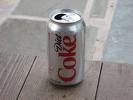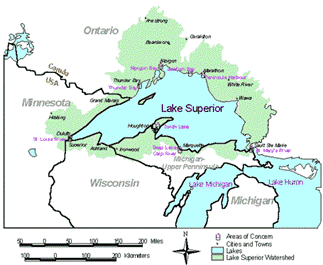“Astropulse:原始黑洞”的版本间差异
| 第35行: | 第35行: | ||
... at least, that's what scientists used to think. But the astrophysicist Stephen Hawking theorized that black holes would radiate a tiny amount of light and matter into space. This happens because of virtual particles that appear and disappear in the vacuum. "Vacuum" is the word scientists use to describe space that it is as empty as possible, with no particles, dust, gas, light, or anything else in it. But it turns out that even a vacuum is not truly empty. It contains no ordinary particles, but it does contain "virtual" particles, which appear from nothing and then disappear before they have a chance to go anywhere or do anything. Virtual particles are created in pairs; one virtual particle is made of matter (like an electron), and the other is antimatter (like a positron.) | ... at least, that's what scientists used to think. But the astrophysicist Stephen Hawking theorized that black holes would radiate a tiny amount of light and matter into space. This happens because of virtual particles that appear and disappear in the vacuum. "Vacuum" is the word scientists use to describe space that it is as empty as possible, with no particles, dust, gas, light, or anything else in it. But it turns out that even a vacuum is not truly empty. It contains no ordinary particles, but it does contain "virtual" particles, which appear from nothing and then disappear before they have a chance to go anywhere or do anything. Virtual particles are created in pairs; one virtual particle is made of matter (like an electron), and the other is antimatter (like a positron.) | ||
| − | + | 上面说的,曾经也是科学家们一直所认为的。但是天体物理学家霍金(Stephen Hawking)创立了一个理论,他认为黑洞也会往太空辐射出向量的光和物质,而这是因为真空中虚粒子的产生和消失所导致的。科学家们用“真空”这个词来表示没有任何粒子、尘埃、气体、光以及其它任何东西在里面的空间。真空里不包含任何普通粒子,但是却包含“虚”粒子,后者可以在虚空中产生,并在它有机会去哪里或做任何事情前消失。虚粒子是成对产生的,一个虚粒子是由物质组成的(就像电子),而另一个配对的虚粒子则是反物质(就像正电子)。 | |
According to Stephen Hawking, it's possible for virtual particles to be created just outside the surface of a black hole, with one of the two particles falling into the black hole, and the other escaping. This process takes matter from the black hole, and allows it to leave in the form of the escaping particles. | According to Stephen Hawking, it's possible for virtual particles to be created just outside the surface of a black hole, with one of the two particles falling into the black hole, and the other escaping. This process takes matter from the black hole, and allows it to leave in the form of the escaping particles. | ||
| + | |||
| + | 按照霍金的说法,有可能在黑洞表面产生虚粒子,每对虚粒子中的一个掉回黑洞,而另一个逃逸出来。这个过程从黑洞中提取物质,并允许它以逃逸粒子的形式离开黑洞。 | ||
It turns out that smaller black holes radiate more than large black holes. A black hole with the mass of the sun would radiate a negligible amount of energy; it would take 7E33 (7 with 33 zeroes after it) such black holes to equal a 60 watt light bulb. On the other hand, a "small" black hole of one billion tons (the mass of the Great Wall of China) would emit 300 million watts. Over time, this radiation would cause the mini black hole to shrink, and as it shrinks, it would radiate even more strongly. After billions of years, it would finally radiate all of its mass away, evaporating suddenly. | It turns out that smaller black holes radiate more than large black holes. A black hole with the mass of the sun would radiate a negligible amount of energy; it would take 7E33 (7 with 33 zeroes after it) such black holes to equal a 60 watt light bulb. On the other hand, a "small" black hole of one billion tons (the mass of the Great Wall of China) would emit 300 million watts. Over time, this radiation would cause the mini black hole to shrink, and as it shrinks, it would radiate even more strongly. After billions of years, it would finally radiate all of its mass away, evaporating suddenly. | ||
| + | |||
| + | |||
We hope that this evaporation would produce radio waves that Astropulse can detect. The evaporation wouldn't create radio waves directly. Instead, it would create an expanding fireball of high energy gamma rays and particles. This fireball would interact with the surrounding magnetic field, pushing it out and generating radio waves. | We hope that this evaporation would produce radio waves that Astropulse can detect. The evaporation wouldn't create radio waves directly. Instead, it would create an expanding fireball of high energy gamma rays and particles. This fireball would interact with the surrounding magnetic field, pushing it out and generating radio waves. | ||
2010年7月25日 (日) 08:45的版本
Primordial Black Holes
原始黑洞
One goal of Astropulse is to detect mini black holes that are evaporating due to "Hawking radiation". These mini black holes would have been created during the big bang, unlike currently known black holes.
Astropulse 的目标之一就是检测那些会由于霍金辐射而蒸发掉的小型黑洞。和目前已知的黑洞不同,这些小黑洞可能会在宇宙大爆炸的时候产生出来。
What is a black hole?
什么是黑洞?
When a huge star runs out of fuel, it collapses and then explodes in a supernova. What's left over is a massive but relatively small object called a black hole. To give you an idea of a black hole's density: the sun has a radius of 700,000 km. A black hole that weighs as much as the sun would have a radius of 3 km. If you could fill a typical pop can (12 oz) with the material in such a black hole, the can would weigh 7 trillion tons, almost as much as the weight of the water in Lake Superior.*
当一颗巨大的恒星耗尽了它自身的燃料之后,就会坍塌并以超新星的形式发生爆炸。最后剩下来的是一颗质量很大而体积却很小的星体,也就是我们所说的黑洞。为了让你对黑洞的密度有一个直观的感受,我们来看一些数字:太阳的直径是 70 万公里,而一个黑洞的质量和太阳差不多,直径却只有 3 公里。如果你用黑洞上的物质来填满一个易拉罐,这个罐子的质量将达到 7 万亿吨,这几乎和苏必利尔湖里所有水的质量差不多。
Perhaps the most famous fact about black holes is the one that makes them "black": because of a black hole's strong gravity, nothing, not even light, can escape from within a black hole. One way to express this is to say that the escape velocity inside a black hole is greater than the speed of light.**
也许关于黑洞最有名的地方还是关于为什么黑洞是“黑”的:因为黑洞的强引力,没有任何事物,包括光在内,能够从黑洞里逃脱出来。如果换一种说法,也就是黑洞的逃逸速度比光速还要快。
What is escape velocity? It's the speed at which you have to throw something to escape a planet or star. For instance, how fast would you have to throw a baseball up in the air, in order to launch it into space, so that it would travel farther and farther away and never come back? (Neglecting air friction.) That's the Earth's escape velocity, about 25,000 miles per hour. This is somewhat more than the top speed of the space shuttle. (The shuttle can afford to travel more slowly, because it propels itself over a period of time, rather than being launched with a single throw.)
什么是逃逸速度?它是把一个东西从行星或恒星表面扔出去所需要的速度。比方说,如果你想把一个棒球扔上天,并且进入太空越飞越远永远不回来,需要多块的速度?(先不考虑大气的影响。)这就是地球的逃逸速度,大概是每小时 2 万 5 千英里吧。而这甚至比航天飞机的发射速度还要快。(因为在发射航天飞机时,并不只是扔一下,而是可以持续地助推自己,所以并不需要一开始就具有相当高的速度。)
If you could somehow go beneath the surface of a black hole, and shine a flashlight out into space, the light coming out of the flashlight would not be going fast enough to escape -- it would fall back toward the black hole. So a black hole never radiates light from inside itself. That makes it "black", so it cannot be seen through a telescope ... it blends right in with the blackness of space around it.
如果你可以到达一个黑洞的表面,然后朝着天空按一下手电筒,从电筒里发出光将没法很快从黑洞里面逃脱出来 -- 而是继续掉回黑洞。因此黑洞不会从自身发出任何光线,这让它看上去是黑的,也就无法从任何望远镜中看到它 ... 只是在围绕在它周围的空间里面留下黑黑的一片。
Hawking radiation
霍金辐射
... at least, that's what scientists used to think. But the astrophysicist Stephen Hawking theorized that black holes would radiate a tiny amount of light and matter into space. This happens because of virtual particles that appear and disappear in the vacuum. "Vacuum" is the word scientists use to describe space that it is as empty as possible, with no particles, dust, gas, light, or anything else in it. But it turns out that even a vacuum is not truly empty. It contains no ordinary particles, but it does contain "virtual" particles, which appear from nothing and then disappear before they have a chance to go anywhere or do anything. Virtual particles are created in pairs; one virtual particle is made of matter (like an electron), and the other is antimatter (like a positron.)
上面说的,曾经也是科学家们一直所认为的。但是天体物理学家霍金(Stephen Hawking)创立了一个理论,他认为黑洞也会往太空辐射出向量的光和物质,而这是因为真空中虚粒子的产生和消失所导致的。科学家们用“真空”这个词来表示没有任何粒子、尘埃、气体、光以及其它任何东西在里面的空间。真空里不包含任何普通粒子,但是却包含“虚”粒子,后者可以在虚空中产生,并在它有机会去哪里或做任何事情前消失。虚粒子是成对产生的,一个虚粒子是由物质组成的(就像电子),而另一个配对的虚粒子则是反物质(就像正电子)。
According to Stephen Hawking, it's possible for virtual particles to be created just outside the surface of a black hole, with one of the two particles falling into the black hole, and the other escaping. This process takes matter from the black hole, and allows it to leave in the form of the escaping particles.
按照霍金的说法,有可能在黑洞表面产生虚粒子,每对虚粒子中的一个掉回黑洞,而另一个逃逸出来。这个过程从黑洞中提取物质,并允许它以逃逸粒子的形式离开黑洞。
It turns out that smaller black holes radiate more than large black holes. A black hole with the mass of the sun would radiate a negligible amount of energy; it would take 7E33 (7 with 33 zeroes after it) such black holes to equal a 60 watt light bulb. On the other hand, a "small" black hole of one billion tons (the mass of the Great Wall of China) would emit 300 million watts. Over time, this radiation would cause the mini black hole to shrink, and as it shrinks, it would radiate even more strongly. After billions of years, it would finally radiate all of its mass away, evaporating suddenly.
We hope that this evaporation would produce radio waves that Astropulse can detect. The evaporation wouldn't create radio waves directly. Instead, it would create an expanding fireball of high energy gamma rays and particles. This fireball would interact with the surrounding magnetic field, pushing it out and generating radio waves. Birth of a black hole
Where would a mini black hole come from? No known black hole is that small. In fact, all known black holes are created in one of two ways. First, they can come from the collapse and supernova explosion of a large star. A star collapses many times over its life span, each time burning a new kind of fuel. Initially, a star burns hydrogen in a nuclear fusion reaction, turning the hydrogen into helium. The heat from this reaction keeps the star from collapsing under its own weight. When the hydrogen is used up, the star collapses and becomes hotter, until it's hot enough to burn helium. Each time the star uses up one kind of fuel, it collapses further until it can burn the next kind of fuel. When the star uses up all of its fuel, it can settle down as a white dwarf star, or it can explode and leave behind a neutron star or black hole. Black holes resulting from this process weigh 4 to 16 times as much as the sun.
Second, large black holes can result from mergers of smaller ones. The black hole at the center of the Milky Way galaxy weighs 4 million times as much as the sun. Black holes in other galaxies may weigh even more.
These processes only allow for the creation of star-sized black holes or larger. But it has been suggested that tiny black holes could have been created at the beginning of the universe, during the big bang. If that were true, some of those mini black holes might be evaporating right now! Because they would have been created in the very early universe, they are called primordial black holes, and Astropulse tries to detect them.
- The density of a black hole depends on how you count its volume. The pop can calculation assumes that the black hole extends to its event horizon, the surface at which the escape velocity equals the speed of light. It might be better to say that a black hole is a singularity, meaning its mass is concentrated at a single point (of zero volume) at the center. On this view, the black hole's density is infinite!
- Another way to say this is that the black hole warps time and space until "forward in time" becomes "into the black hole." Nothing inside the black hole can escape, or even start to travel away from the black hole, any more than it can go backward in time.


